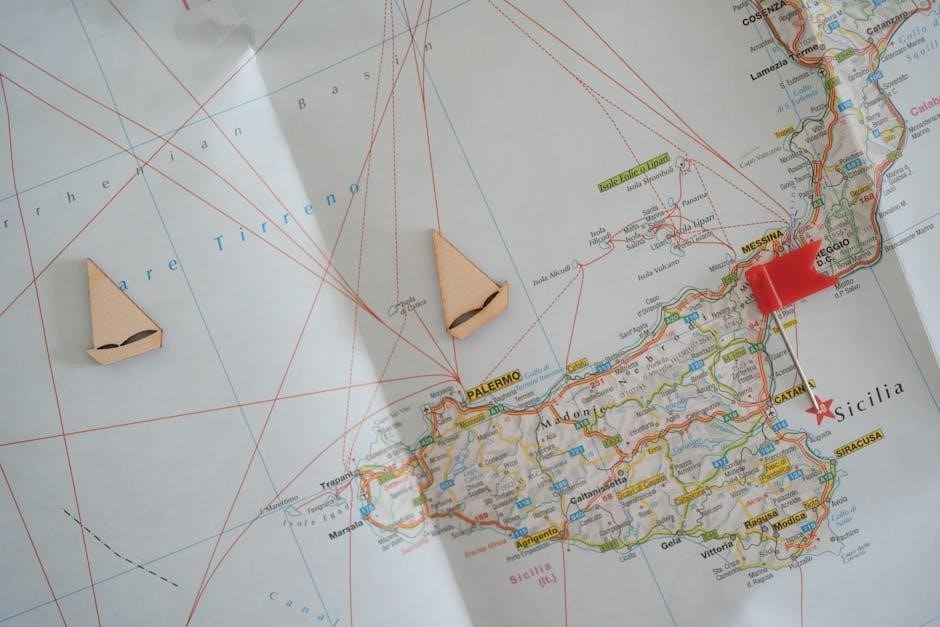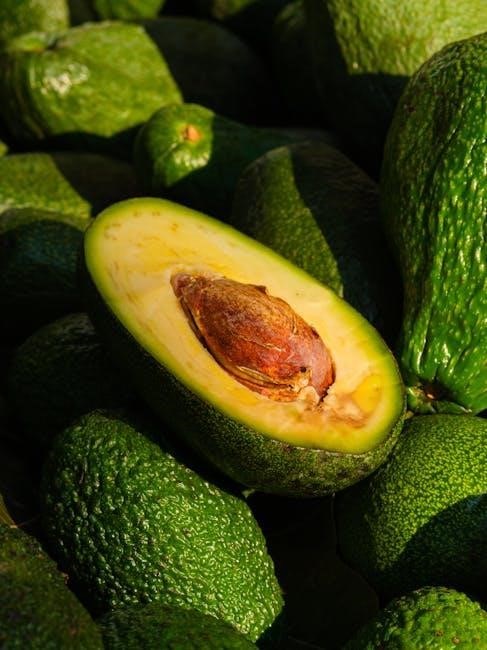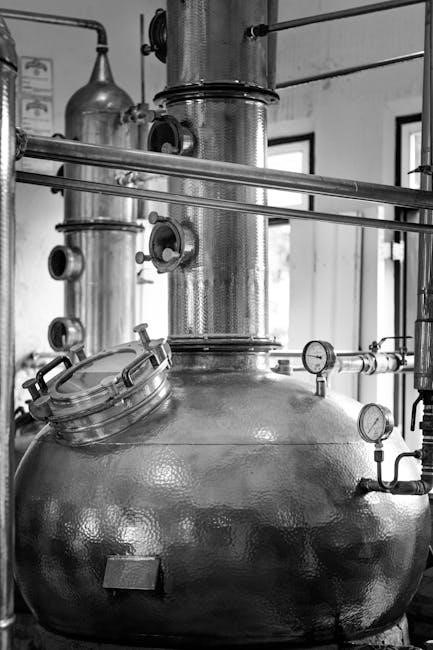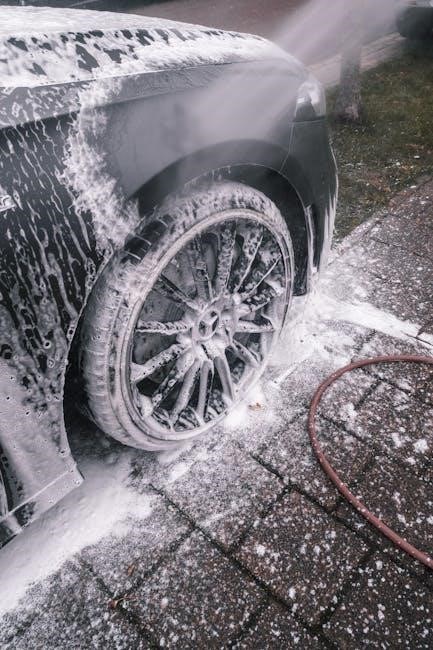top gun guide service
Welcome to Top Gun Guide Service, your premier destination for unforgettable waterfowl hunting adventures across North America. With expert guides and exclusive access to prime hunting locations, we offer tailored experiences for duck, goose, and snow goose hunts; Known for our high success rates and professional approach, we ensure thrilling expeditions in diverse landscapes, making us a top choice for waterfowl enthusiasts.
What is Top Gun Guide Service?
Top Gun Guide Service is a renowned, family-run outfit specializing in world-class waterfowl hunting experiences. With over 20 years of expertise, we provide guided duck, Canada goose, and spring snow goose hunts across prime locations in Minnesota, Missouri, Manitoba, and beyond. Our professional guides, custom decoy strategies, and exclusive access to leased lands ensure unforgettable adventures. We pride ourselves on high success rates, tailored packages, and a commitment to ethical hunting practices, making us a trusted choice for waterfowl enthusiasts seeking premium experiences.
A Brief History of the Company
Top Gun Guide Service was established as a family-run business with a passion for waterfowl hunting. Over 20 years, we’ve grown into a premier outfit, offering expert-guided hunts across the U.S. and Canada. Our roots trace back to a small operation in Minnesota, expanding to cover prime locations like Missouri, Manitoba, and beyond. We’ve built a reputation on ethical practices, tailored experiences, and exceptional success rates, making us a trusted name in waterfowl hunting. Our dedication to quality and customer satisfaction has solidified our position as a leader in the industry.
Mission and Values
Top Gun Guide Service is committed to delivering exceptional waterfowl hunting experiences while upholding the highest ethical standards. Our mission is to provide safe, thrilling, and unforgettable adventures through responsible hunting practices. We prioritize conservation, ensuring sustainable hunting environments for future generations. Our values include integrity, respect for nature, and a dedication to client satisfaction. By fostering a culture of camaraderie and professionalism, we strive to create lasting memories for every hunter who joins us in the field.
Types of Hunting Adventures
Top Gun Guide Service offers diverse waterfowl hunting experiences, including duck hunts, Canada goose hunts, and spring snow goose hunts. Each adventure is tailored for thrill and success.
Duck Hunts
Top Gun Guide Service specializes in unforgettable duck hunting experiences across prime locations in Missouri and Manitoba. With expert guides and exclusive access to thousands of acres, we ensure high success rates. Our duck hunts are tailored to provide thrilling adventures, combining proven decoy strategies and calling techniques. Whether you’re targeting trophy ducks or enjoying the thrill of the hunt, our all-inclusive packages offer lodging, bird cleaning, and top-notch equipment. Join us for an unparalleled waterfowl experience designed to create lifelong memories.
Canada Goose Hunts
Top Gun Guide Service offers exceptional Canada goose hunting experiences in prime locations like Minnesota. Our expert guides leverage decades of experience to ensure successful outings. Custom decoy spreads and proven calling techniques attract abundant birds, maximizing your hunting potential. With access to leased land and refuge fields, we provide exclusive opportunities to target trophy Canada geese. Our all-inclusive packages feature lodging, bird cleaning, and top-tier equipment, ensuring a seamless and memorable adventure tailored to every hunter’s needs and preferences.
Spring Snow Goose Hunts
Experience the thrill of Spring Snow Goose Hunts with Top Gun Guide Service. Our expert guides lead you through prime migration hotspots, ensuring unforgettable adventures. With custom decoy spreads and proven calling techniques, we maximize your hunting success. Offering hunts in Missouri and other key locations, we provide access to leased lands and traffic spots where snow geese thrive. Our customizable packages and experienced crew ensure a seamless and rewarding experience, making your spring snow goose hunt a memory to cherish.

Locations and Hunting Grounds
Welcome to Top Gun Guide Service, where your adventure awaits across strategic locations in Minnesota, Missouri, Manitoba, Arkansas, and South Dakota. Explore diverse habitats tailored for exceptional waterfowl hunting experiences.
Hunting in Minnesota
Minnesota offers renowned waterfowl hunting grounds, with Top Gun Guide Service providing access to thousands of acres in prime locations like the Devils Lake area. The state’s diverse wetlands and fields attract abundant duck and goose populations. Our expert guides leverage decades of local knowledge to ensure successful hunts. From Canada geese to mallards, Minnesota’s rich habitat supports thrilling adventures. Experience world-class hunting with exclusive access to leased land, refuge fields, and strategic traffic spots, all managed by our seasoned team to maximize your hunting success and enjoyment.
Hunting in Missouri
Top Gun Guide Service excels in Missouri’s waterfowl hunting, offering spring snow goose and duck hunts. The state’s central location along the Mississippi Flyway attracts vast bird migrations. Our expert guides utilize custom decoys and proven calling techniques to ensure memorable experiences. Hunt on leased land and refuge fields, benefiting from our extensive scouting network. Missouri’s diverse habitats provide ideal conditions for targeting snow geese and ducks. Join us for unparalleled hunting adventures with high success rates and professional guidance tailored to your needs.
Hunting in Manitoba
Top Gun Guide Service offers exceptional waterfowl hunting experiences in Manitoba, known for its abundant duck and goose populations. Located along the Central Flyway, Manitoba attracts millions of migratory birds; Our expert guides lead hunts in prime habitats, from vast wetlands to agricultural fields. With years of local knowledge, we ensure access to productive hunting grounds. Experience the thrill of Canada goose and duck hunting in Manitoba’s pristine landscapes, supported by our top-tier equipment and proven strategies for a successful and memorable hunt.
Hunting in Arkansas
Arkansas, a hotspot along the Mississippi Flyway, offers exceptional waterfowl hunting opportunities. Top Gun Guide Service provides expert-guided hunts in Arkansas, targeting abundant duck and goose populations. Our experienced guides leverage their local knowledge to access prime hunting locations, from marshes to agricultural fields. With a focus on spring snow goose hunts and fall waterfowl seasons, we ensure a thrilling experience. Arkansas’s diverse habitats and migration patterns make it a key destination for hunters seeking trophy waterfowl, supported by our top-tier equipment and proven hunting strategies.
Hunting in South Dakota
South Dakota offers a diverse and thrilling hunting experience, renowned for its vast prairies and abundant waterfowl populations. Top Gun Guide Service excels in this region, providing expert-guided hunts in prime locations like Devils Lake and surrounding areas. Hunters can pursue species such as mallards, Canada geese, and snow geese in both spring and fall seasons. With its rich natural habitats and strategic flyways, South Dakota is a hotspot for waterfowl enthusiasts. Our guides ensure a memorable adventure, combining local knowledge with proven hunting techniques to maximize success rates.

Expert Guides and Their Experience
Top Gun Guide Service boasts a team of seasoned experts with over 20 years of experience, ensuring exceptional hunting adventures. Their extensive knowledge and dedication guarantee unforgettable experiences.
Meet the Guides
Our guides at Top Gun Guide Service are passionate, experienced outdoorsmen with decades of expertise in waterfowl hunting. Many have grown up hunting in the regions we operate, giving them intimate knowledge of local habitats and bird behavior. Each guide is dedicated to ensuring a safe, successful, and enjoyable experience, whether you’re a seasoned hunter or a first-timer; Their commitment to excellence and high standards have built trust and loyalty among clients. Meet our team and discover why they are the backbone of our success in providing unforgettable hunting adventures.
Years of Experience
Top Gun Guide Service boasts over 20 years of experience in delivering exceptional waterfowl hunting adventures. Our seasoned guides have spent decades mastering the art of hunting, with extensive knowledge of bird migration patterns, decoy strategies, and effective calling techniques. This wealth of experience ensures that every hunt is meticulously planned and executed, providing clients with high success rates and unforgettable memories. Trust our expertise to make your hunting journey a success, whether you’re targeting ducks, geese, or snow geese across North America.
Guide-Client Ratio
Top Gun Guide Service prioritizes a low guide-to-client ratio to ensure personalized attention and a superior hunting experience. Our experienced guides work closely with small groups, allowing for tailored strategies and increased success rates. This approach fosters a more immersive and enjoyable adventure, as our experts can adapt to the unique needs of each hunter. With a focus on safety and effectiveness, our guide-client ratio is designed to maximize your time in the field and create lasting memories. Trust our team to deliver a world-class hunting experience.

Hunting Approach and Tactics
Top Gun Guide Service employs expert decoy strategies, precise calling techniques, and optimal blind setups to ensure successful hunts. Our experienced guides adapt tactics to match bird behavior and field conditions, maximizing your hunting experience with proven methods and cutting-edge equipment.
Decoy Strategies
Top Gun Guide Service employs highly effective decoy strategies to ensure successful hunts. We use a variety of high-quality decoys, including custom designs, to mimic real bird behavior. Our guides carefully position decoys to create realistic spreads, adapting to the specific species and hunting conditions. From classic waterfowl decoys to innovative motion decoys, we utilize the latest techniques to attract birds effectively. Our strategic decoy placement and expert setup ensure a natural and enticing environment, increasing the chances of a successful and memorable hunting experience for our clients.
Calling Techniques
Top Gun Guide Service specializes in advanced calling techniques to attract waterfowl effectively. Our expert guides use high-quality calls tailored to specific species and hunting conditions. From soft, subtle quacks for ducks to loud, resonant honks for geese, our techniques are designed to mimic natural bird communication. We emphasize realistic cadences and tones to engage birds confidently. Whether it’s a spring snow goose hunt or a fall waterfowl expedition, our skilled callers adapt their strategies in real-time to ensure optimal results, making every hunt a memorable experience for our clients.
Blind Setup and Concealment
Top Gun Guide Service excels in expertly setting up blinds and ensuring complete concealment to maximize hunting success. Our guides strategically position blinds to blend seamlessly into natural surroundings, utilizing vegetation and terrain for optimal cover. We employ cutting-edge camouflage materials and techniques to remain undetected by wary waterfowl. Whether in fields, marshes, or wetlands, our meticulous setup ensures hunters are hidden yet perfectly positioned to engage birds effectively. This attention to detail enhances the hunting experience, allowing birds to approach confidently and within range, ensuring thrilling and productive hunts for all clients.

Success Rates and Client Satisfaction
Top Gun Guide Service boasts impressive success rates, with clients consistently achieving high harvest numbers. Hunters praise the service for its professionalism, attention to detail, and unforgettable experiences.
Success Rate Statistics
Top Gun Guide Service consistently achieves a 90% success rate, with hunters averaging 4-6 birds per day. Our expert guides and strategic locations ensure high harvest numbers, surpassing industry standards. Clients often report exceptional results, with many achieving their limits during hunts. The combination of experienced scouts, premium decoys, and proven calling techniques contributes to these impressive statistics. Hunters leave satisfied, with many returning annually, reflecting our commitment to delivering outstanding waterfowl hunting experiences.
Client Testimonials
Clients praise Top Gun Guide Service for exceptional hunting experiences. “Unforgettable adventure with expert guides,” says John D., highlighting their professionalism. Sarah M. raves, “High success rate, exceeded expectations!” Many commend the tailored trips and knowledgeable staff. Hunters appreciate the prime locations and ethical practices, ensuring memorable outings. Positive reviews underscore their commitment to excellence, making them a top choice for waterfowl enthusiasts seeking thrilling and successful hunts.

Pricing and Packages
Top Gun Guide Service offers 3-day hunts for $1,100 and 5-day hunts for $1,800, including guides, lodging, bird cleaning, decoys, and blinds for a seamless experience.
3-Day Hunt Packages
Our 3-Day Hunt Packages are perfectly designed for an immersive waterfowl experience. Priced at $1,100, each package includes expert guides, comfortable lodging, and all necessary equipment like decoys and blinds. We ensure a seamless adventure, covering bird cleaning and preparation for transport. Whether you’re pursuing ducks or geese, our 3-day hunts offer the perfect balance of excitement and convenience, making them ideal for both seasoned hunters and newcomers alike.
5-Day Hunt Packages
Our 5-Day Hunt Packages offer an extended, immersive waterfowl hunting experience, priced at $1,800. These packages include expert guides, premium lodging, and all necessary equipment such as decoys and blinds. We also handle bird cleaning and preparation for transport. Designed for serious hunters, our 5-day adventures provide ample opportunities to pursue trophy waterfowl in prime locations. With a focus on both excitement and relaxation, this package is ideal for those seeking a comprehensive and unforgettable hunting getaway with Top Gun Guide Service.
What’s Included in the Packages
Our hunt packages are designed to provide a seamless and unforgettable experience. Each package includes expert guides with years of experience, access to prime hunting locations, and top-quality equipment such as decoys, blinds, and calls. Lodging is also included, ensuring comfort during your stay. Additionally, we handle bird cleaning and preparation for transport. Meals and beverages are provided in most packages, allowing you to focus solely on your hunting adventure. With Top Gun Guide Service, everything you need for a successful hunt is taken care of.

Booking Your Hunt
Book your hunt with Top Gun Guide Service by calling 507-696-0208 or visiting our website. We offer spring and fall hunting packages in Missouri, Minnesota, and other prime locations across North America. Choose from 3-day or 5-day adventures tailored to your preferences.
How to Book Your Adventure
Booking your hunt with Top Gun Guide Service is straightforward. Call us at 507-696-0208 or visit our website to explore available packages. Choose from 3-day or 5-day hunts tailored to your preferences. Spring and fall adventures in Missouri, Minnesota, and other prime locations are available. Secure your spot early to ensure availability. Our team is ready to assist with customizing your hunt and answering any questions. Don’t miss out on unforgettable waterfowl hunting experiences—book today and join our expert guides for a memorable adventure!
Contact Information
Reach Top Gun Guide Service at 507-696-0208 to book your hunt or inquire about packages. Visit our website at topgunguideservice.com for detailed information. Follow us on social media for updates and testimonials. Our office is open 24/7 to assist with your hunting plans. Contact us today to secure your spot for an unforgettable waterfowl adventure across North America!
Seasonal Hunts and Special Events
Top Gun Guide Service offers thrilling seasonal waterfowl hunts, including spring snow goose migrations and fall waterfowl seasons. Join us for exclusive events across North America!
Spring Snow Goose Season
Experience the thrill of spring snow goose hunting with Top Gun Guide Service. Our expert guides lead you through prime migration hotspots, ensuring unforgettable adventures. With over 20 years of expertise, we utilize custom decoys and proven calling techniques to maximize success. Hunt in leased fields, refuge areas, and high-traffic zones across Missouri and other key locations. Our spring snow goose season offers exhilarating action, with thousands of birds migrating through our areas. Join us for a hunt that combines strategy, excitement, and unparalleled bird numbers—book your spot today and make memories that last a lifetime!
Fall Waterfowl Season
The fall waterfowl season with Top Gun Guide Service is a thrilling experience, offering exceptional duck and goose hunting opportunities across prime locations in Minnesota, Missouri, Arkansas, and South Dakota. Our expert guides, with decades of experience, utilize proven decoy strategies and blind setups to ensure successful hunts. The fall season brings a variety of waterfowl species, with large migratory flocks passing through our areas. Enjoy the crisp autumn air and the excitement of pursuing ducks and geese in their natural habitats. Book your fall hunt today and experience world-class waterfowl action!
Gear and Equipment
Top Gun Guide Service provides essential gear, including decoys, blinds, and bird cleaning services. Hunters are recommended to bring waterproof clothing, waders, and their preferred firearms for optimal success.
Provided Equipment
Top Gun Guide Service ensures a seamless hunting experience by providing high-quality decoys, blinds, and calling equipment. Guides also handle bird cleaning and preparation. Lodging and meals are included in packages, allowing hunters to focus on their adventure. Clients are encouraged to bring their preferred firearms, ammunition, and personal gear for optimal comfort and success in the field.
Recommended Gear to Bring
Hunters are advised to bring their preferred shotguns, ammunition, and camouflage clothing suited for the season. A good pair of binoculars, waterproof gear, and sturdy footwear are essential. Personal items like sunscreen, insect repellent, and warm layers enhance comfort. While Top Gun Guide Service provides decoys and blinds, bringing your own calls can personalize the experience. Ensuring you have the right gear ensures a successful and enjoyable hunting adventure with our expert guides.

Ethics and Conservation
Top Gun Guide Service prioritizes responsible hunting practices, promoting sustainable wildlife management and environmental stewardship. We adhere to ethical guidelines to ensure conservation and preserve natural habitats for future generations.
Responsible Hunting Practices
- Top Gun Guide Service emphasizes strict adherence to local and federal hunting regulations to ensure sustainable wildlife populations.
- We promote ethical hunting practices, including fair chase and selective harvesting to maintain ecological balance.
- Our guides educate clients on minimizing environmental impact and respecting wildlife habitats.
- Safety is paramount; all hunts are conducted with rigorous safety protocols to protect both hunters and the environment.
- We advocate for the responsible use of resources and gear to promote long-term conservation efforts.
Conservation Efforts
Top Gun Guide Service is committed to preserving wildlife and habitats through active conservation initiatives. We work with local organizations to protect waterfowl populations and their ecosystems. By leasing and managing private lands, we ensure safe habitats for migratory birds. Our guides educate clients on sustainable practices and the importance of ethical hunting. A portion of our proceeds supports conservation programs aimed at restoring wetlands and promoting biodiversity. We strive to balance hunting with environmental stewardship, ensuring a thriving future for waterfowl and their habitats.

Media and Online Presence
Top Gun Guide Service maintains a strong online presence through its website and social media platforms. Follow us on Facebook and Instagram for updates, and visit topgunguideservice.com for detailed information on our hunts and services.
Social Media Presence
Top Gun Guide Service actively engages with outdoor enthusiasts on platforms like Facebook and Instagram. Our pages feature thrilling hunt highlights, client testimonials, and updates on seasonal adventures. Follow us for exclusive insights into our guided hunts, expert tips, and stunning imagery from the field. Stay connected to receive real-time updates, promotions, and stories from our waterfowl hunting expeditions across North America. Join our growing community and share your own hunting experiences with us!
Featured in Outdoor Magazines
Top Gun Guide Service has been recognized in prominent outdoor magazines for its exceptional waterfowl hunting experiences. Featured articles highlight our expert guides, exclusive access to prime hunting locations, and innovative techniques. These publications showcase our commitment to ethical hunting practices and conservation efforts, earning us a reputation as a trusted leader in the outdoor community. Our appearances in these magazines demonstrate our dedication to providing unforgettable adventures for hunters of all skill levels, solidifying our place in the world of waterfowl hunting.

Future Plans and Expansion
Top Gun Guide Service is expanding its operations into new hunting locations, including Alberta and Saskatchewan. Plans include introducing new specialized hunting packages and innovative services to enhance the hunting experience for clients.
Upcoming Hunting Locations
Top Gun Guide Service is excited to announce its expansion into new hunting territories, including Alberta and Saskatchewan. These regions offer diverse ecosystems and abundant waterfowl populations, providing unique opportunities for duck, goose, and snow goose hunts. The addition of these locations complements our existing operations in Minnesota, Missouri, Manitoba, Arkansas, and South Dakota. With prime access to untouched habitats, we are introducing new specialized hunting packages tailored to these areas. Stay tuned for updates as we continue to explore and develop these exciting destinations for our clients.
New Services and Innovations
Top Gun Guide Service is continuously evolving to enhance your hunting experience. We’ve introduced advanced decoy systems and improved calling techniques for better bird attraction. New guided trip options now include specialized waterfowl photography sessions and youth hunting mentorship programs. Additionally, we’ve launched a state-of-the-art online booking system for seamless hunt reservations. Our commitment to innovation ensures we stay ahead in delivering exceptional hunting adventures tailored to meet the needs of both seasoned hunters and newcomers alike.






























